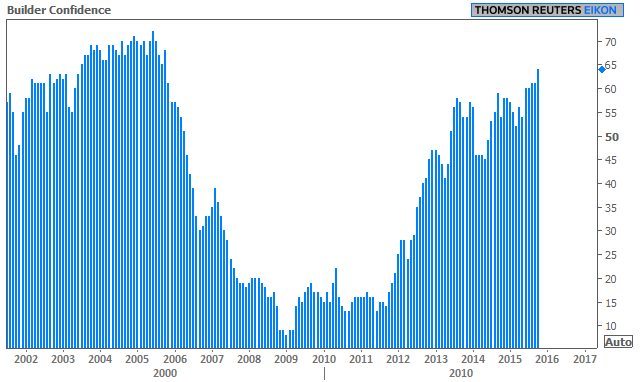It is official, the slump in builder confidence is over. The National Association of Home Builders (NAHB) said today that ten years after it began its long and steep decline the NAHB/Wells Fargo Housing Market Index (HMI) has returned to levels last seen at the end of the housing bubble. The composite HMI rose three points this month to 64
"With October's three-point uptick, builder confidence has been holding steady or increasing for five straight months. This upward momentum shows that our industry is strengthening at a gradual but consistent pace," said NAHB Chief Economist David Crowe. "With firm job creation, economic growth and the release of pent-up demand, we expect housing to keep moving forward as we start to close out 2015."

The HMI and its three components are derived from a monthly survey NAHB has conducted among its new home builder members for more than 30 years. Respondents are asked their perceptions of current single-family home sales and sales expectations for the next six months as "good," "fair" or "poor." The survey also asks builders to rate traffic of prospective buyers as "high to very high," "average" or "low to very low." Scores for each component are then used to calculate a seasonally adjusted index where any number over 50 indicates that more builders view conditions as good than poor.
The always lagging measure of buyer traffic was the only component that did not change, remaining at 47 percent. That measure has not crossed the 50 percent mark since August 2005. The index measuring sales expectations in the next six months rose seven points to 75, and the component gauging current sales conditions increased three points to 70.
"The fact that builder confidence has held in the 60s since June is proof that the single-family housing market is making lasting gains as more serious buyers come forward," said NAHB Chairman Tom Woods. "However, our members continue to tell us there are still pockets of softness in some markets across the nation, and that they face challenges regarding the availability of lots and labor."
All four regions posted gains in their three month moving averages. The West rose five points to 69 while each of the other three regions moved up one point; the Northeast to 47, the Midwest to 60, and the South reached 65.







